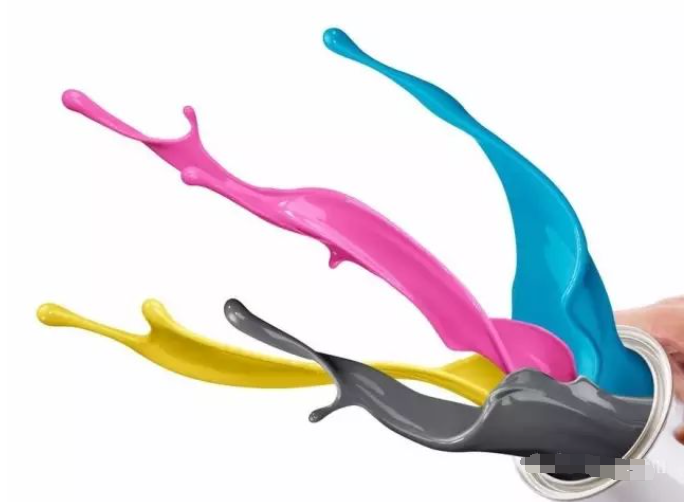Pigment paste’s performance indicators and its impact on coatings

1. Color of paint
The color of the pigment is the result of the pigment’s selective absorption of light of different wavelengths in the visible light. It is affected by physical properties such as crystal shape, particle size and dispersion properties. For example, the color of iron oxide red changes with its particles. The increase in particle size changes from orange-red to purple-red; the color of the pigment is also affected by the light shining on it. For example, in the dark, the pigment does not show any color, and the color under strong light is better than that under dark It appears bright under light, and the same pigment under different light sources (such as sunlight, incandescent light, fluorescence, etc.) can also show different colors.
2. Coloring power
The tinting power of a pigment refers to the ability of one pigment to produce a darker or darker color when mixed with another pigment. When mixing the same color, the stronger the tinting power, the less the amount of color paste, and the smaller the reduction in the water resistance of the color paste coating and the smaller the impact on the coating film performance. Therefore, the quality of products of the same color from different manufacturers will vary greatly. The strength of the pigment’s tinting power not only depends on its properties, but also has a certain relationship with its degree of dispersion. The greater the degree of dispersion, the stronger the tinting power.
3. Light resistance and weather resistance
The color of pigments will change to varying degrees under the action of light. The color of inorganic pigments will gradually darken when exposed to sunlight for a long time, and some pigments will also pulverize under the action of ultraviolet rays in the sun. Exterior wall coatings should use pigments with good light and weather resistance. Generally, the light resistance is greater than level 7 to 8, with level 8 being the best. The weather resistance is greater than level 4 to 5, with level 5 being the best. Inorganic pigments such as iron oxide series generally have very good light resistance, and the color retention of corresponding colors of paint is very good; organic pigments are relatively worse than inorganic pigments, and the price is much higher. The higher the light fastness of organic pigments, the higher the price. For each level of light fastness, the price and weather resistance and color retention will be very different. When the light fastness is ≤6 and the weather resistance is ≤3, the price will differ by more than 4 times. Therefore, exterior wall paints, especially organic paints, get what you pay for.
4. Covering power
The ability of the pigment in the coating film to cover the surface of the object being painted so that the substrate can no longer be exposed through the coating film. The hiding power of pigments mainly depends on factors such as refractive index, light absorption ability, crystal structure, and degree of dispersion. The hiding power of a pigment depends not only on the coating’s ability to reflect light, but also on its ability to absorb light that strikes the coating’s surface. For example, carbon black can completely absorb the light that shines on it, so its hiding power is extremely strong. The hiding power of opaque color pigments also depends on their selective absorption of light. When the pigment is evenly dispersed in the base material, the particle size will be small, the specific surface area will increase, and therefore the covering ability will increase. However, if the size of the pigment particle size is equal to half the wavelength of the light, the light will Advances through the particle without refraction, making the particle transparent. The higher the crystallinity of the pigment, the stronger its hiding power. The hiding power of mixed pigments cannot be calculated based on the additive rule based on the hiding power of each component of the mixture. In fact, the hiding power of most mixed pigments is greater than the calculated value. Therefore, mixing pigments and fillers in appropriate proportions will not affect their hiding power and will help reduce costs. The higher the hiding power of the paint, the higher the painting area and the lower the project cost.
Hiding power of commonly used pigments
Pigment Hiding power
Titanium dioxide 50 g/square meter
Lithopone 120g/square meter
Iron oxide yellow 60g/square meter
Iron oxide red 60 g/square meter
5. Dispersion and adaptability

The so-called dispersion of pigments refers to the ease with which aggregated pigment particles are dispersed in the paint base material and their dispersion state after dispersion. It is affected by pigment properties, preparation methods, particle size and particle size distribution, etc. influence of factors. The dispersion of pigments has a significant impact on the hiding power and tinting power of the pigment, and also has an impact on the physical and chemical properties of the coating film. Suitability of pigmentsSexuality issues are particularly important for emulsion architectural coatings. Due to different types of pigments, the effects of pigments will also vary to a certain extent, and this tendency is even more obvious for organic pigments. If the pigment is poorly dispersed in the paint and poorly matched to the paint, the paint may potentially flocculate or even fade.
6. Fineness
The fineness of the color paste is not as fine as possible, because pigments such as phthalocyanine blue and phthalocyanine green are themselves small molecular pigments. If the fineness is too small, the particle size difference will be large, the dispersion will be poor, and it will not match the paint. The capacitance is not good, the cost of coloring will increase, and it will also cause floating colors.
7. Acid and alkali resistance
The acid and alkali resistance of pigments is also an important performance indicator for their use in architectural coatings. For example, iron blue or chromium yellow will decompose when exposed to alkali, and gray calcium powder and calcium carbonate will react when exposed to acid, so care should be taken when using them. If you choose yellow, blue, etc., which are produced by non-professional latex paint manufacturers at very low prices, because the price is very low or the pigment properties are not known, the latex paint will soon fade, become powdery, and efflorescence, so the customer chooses the paint. And latex paint coloring must be carefully selected.